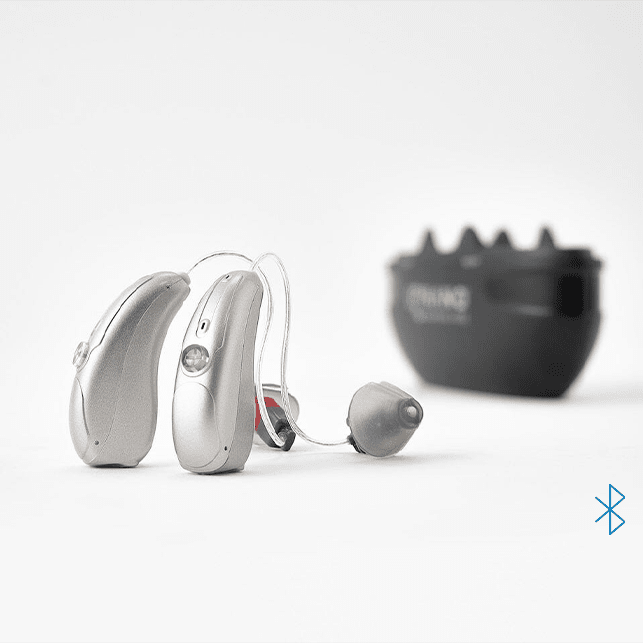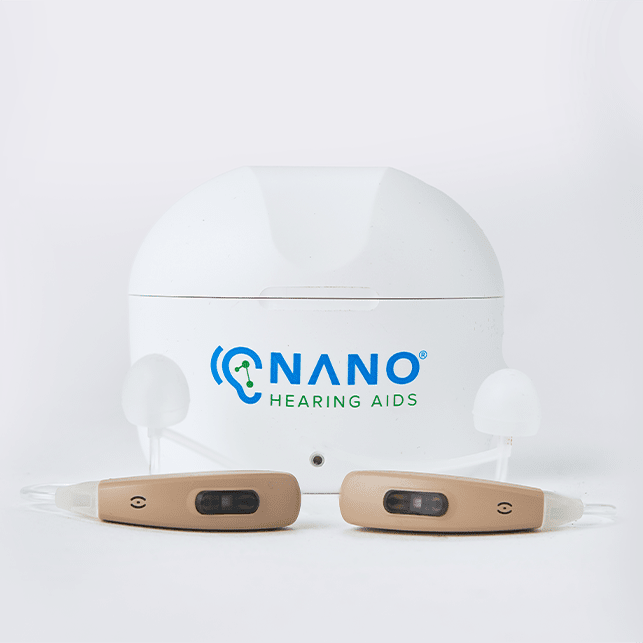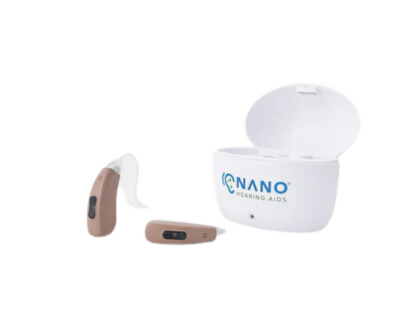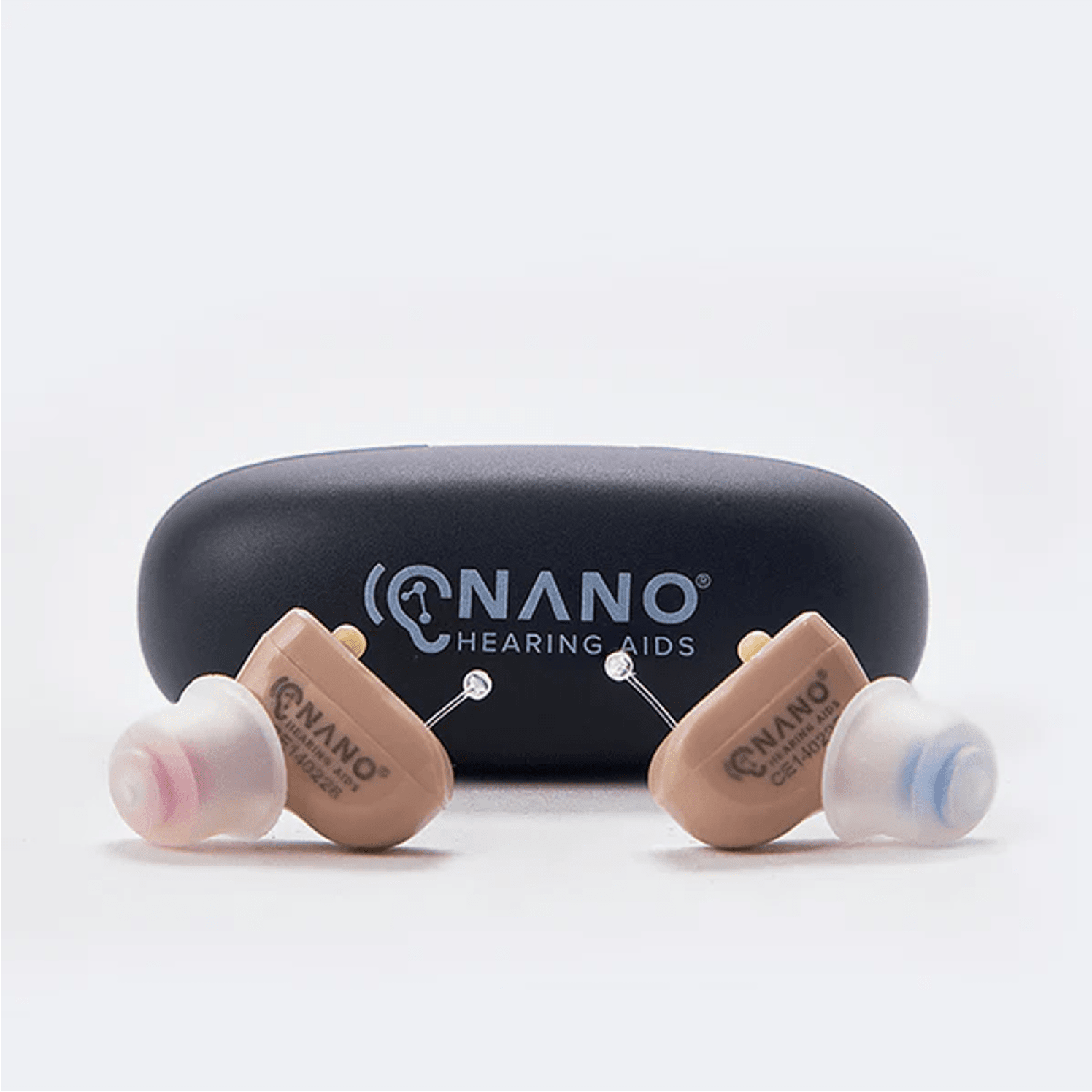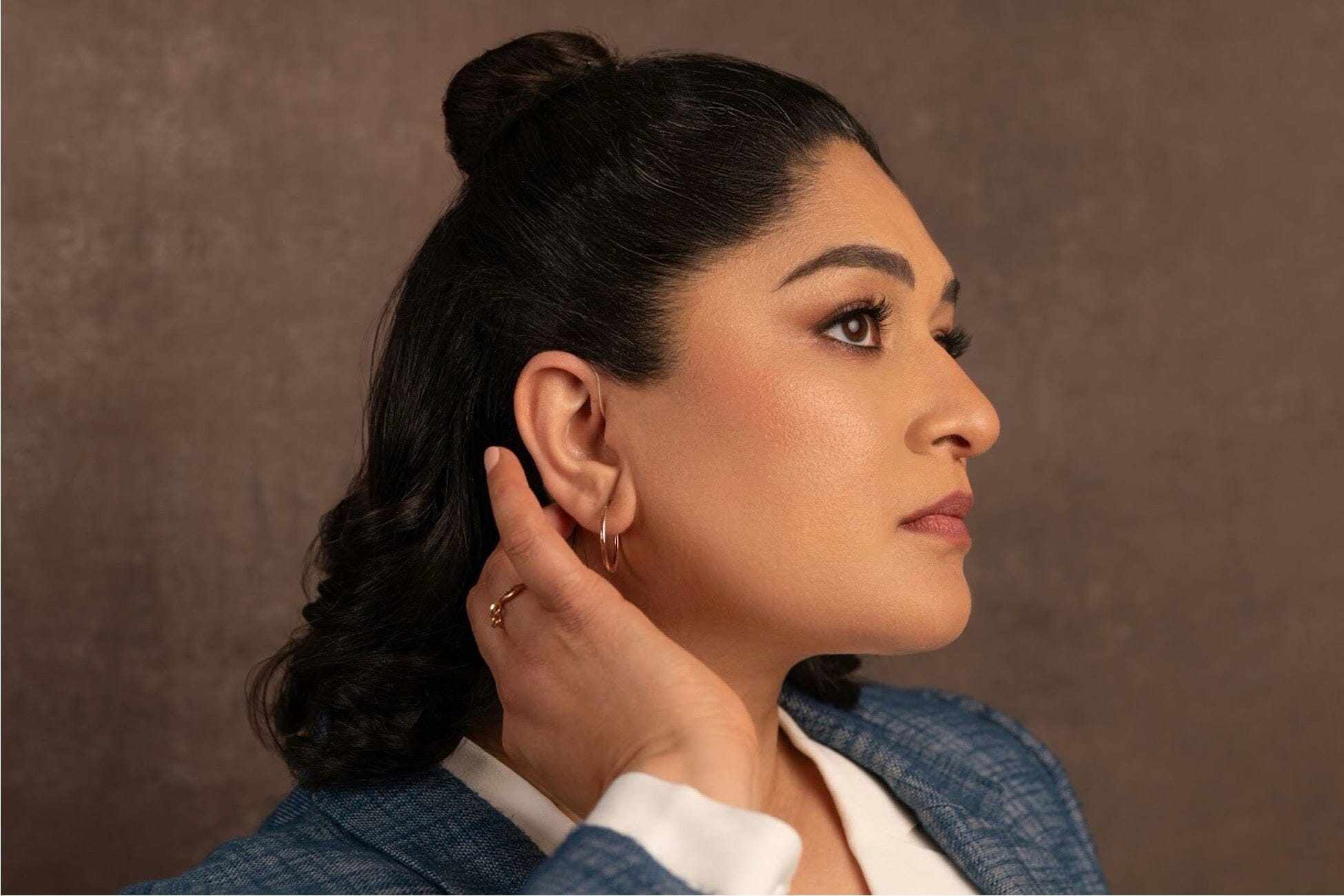When you embark on the journey of getting prescription hearing aids, you’re taking a positive step toward improving your hearing health and quality of life. Initially, getting your hearing aids fitted will be one of the first and most important steps in that journey.
Understanding what to expect during the fitting process ensures a smooth, stress-free transition to a life with hearing aids. We know, as Nano Hearing Aids has a history of providing quality OTC hearing aid products at affordable prices, and can help guide you through the fitting process. Read on to find out how you can prepare for the experience.
Purpose of the fitting process
Hearing aids are the best solution for mild to moderate hearing loss, and can be a crucial aspect of hearing healthcare. However, these devices are even more functional when fitted properly.
Here are some of the many reasons why you should have your hearing aids fitted:
- Enhanced Sound Quality: Fitted hearing aids are aligned with your ear properly, allowing for the best sound quality. Sounds will be sharper and clearer, which is especially important for understanding conversations.
- Comfort: Ill-fitted hearing aids can be uncomfortable or fall out of your ears, resulting in frustration. You’re far more likely to put your hearing aids in regularly when they fit snugly in your ear.
- Less Whistling: Whistling and other unpleasant high-pitched noises are more likely to occur with hearing aids that do not fit the ear well. Properly fitted hearing aids will reduce the chances of these sounds occurring.
- Proper Volume: During your fitting, the volume of your hearing aids can be adjusted to suit your needs.
Having hearing aids fitted is a proactive step toward addressing hearing loss, fostering better communication, and enjoying a fuller, more engaging life.
Preparing For Your Fitting
Preparing for your fitting will help you get the most out of the process. Be sure to attend any important hearing aid appointments prior to your fitting, and then consider these preparation suggestions:
- Clear your schedule leading up to your appointment
- Write down any questions you think of in advance
- Take notes during any appointments leading up to the fitting
- Ask a friend to join you
- Mentally prepare for the changes that come with hearing aids
All of these tips will help keep you relaxed before your fitting, and make it easier to remember any important questions or concerns you have for your audiologist.
The Step-by-Step Fitting Process
The fitting process is simple and easy when you know what to expect. Here are the typical steps you’ll go through:
1. Pre-Fitting Evaluation
Before you have your hearing aids fitted you’ll attend an initial evaluation appointment. During this appointment, your hearing healthcare professional will administer a hearing test. This isn’t like a math test though, as the goal is simply to determine what type of hearing aid will suit your needs.
Following the hearing test, your healthcare professional will assess your lifestyle. You’ll provide information about your daily listening environments and challenges. This information is important, as someone who plays a musical instrument, for example, may need different hearing aids than someone who specifically struggles with conversation.
Additionally, factors like color, features, and preferences will be considered during your evaluation. With the help of your healthcare professional, you’ll be able to select hearing aids tailored to your needs.
2. Ear Impression Appointment
After your evaluation, the next step is getting ear impressions. More specifically, ear impressions create custom molds of your ear canal and outer ear to ensure the best hearing aid fit. The process is very similar to getting impressions of your teeth at the dentist, with the bonus of avoiding the taste.
Of course, not every hearing aid requires molds. Some come with pre-made dome styles, allowing you to bypass this part of the fitting process. It’s important to choose the style of hearing aid that works best for you based on your ear shape. Don’t worry, your hearing healthcare provider will assist with this.
Overall though, the ear impression process is quick and may be repeated annually for adjustments.
3. Hearing Aid Fitting
Once the initial evaluation and fitting processes are complete, you’ll then wait to receive your new hearing aids. Once received, a hearing aid fitting is conducted to confirm proper fit and adjustments.
To prevent over-amplification and check general sound levels in your ear canal, real-ear measurements may be taken. Be sure to mention if you experience any discomfort during the measurement process.
At this final fitting session, you’ll also receive guidance on how to use special features, adjust volume, change batteries, and overall care. For the best results over time, your hearing healthcare professional will recommend regular maintenance and adjustment check-ups.
How To Ensure a Successful Fit
It’s normal to feel worried about the fit of your hearing aids when you’re going through the process for the first time. Luckily, we have tips to help you achieve the best fit with minimal stress:
Focus On The Fit
A properly fitted hearing aid should feel snug, but not too tight. Take the time to move your head and listen to sounds. Correctly fitted hearing aids will stay in place and function properly no matter how many times you move.
Conversely, you can tell if your new hearing aid doesn’t fit if:
- You feel pain or discomfort
- There are problems with sound and volume
- You hear buzzing or whistling
- Your device won’t stay in place
Engage With Your Hearing Care Provider
Even if you approach your hearing aid fitting with knowledge of the process, you can further improve the fit by engaging with your hearing aid professional. These professionals regularly interact with hearing aid wearers. They can tell you all about the features of your hearing aid, how the hearing aids work, and what else you can expect.
Communicating openly and freely with your provider will prevent you from going home with ill-fitted hearing aids, as well as empower you to maximize the benefits of your hearing aids in everyday life.
Plus, you can ask them questions about how to sustain health, handle background noise, and strategies for noise reduction. All of these topics are crucial factors in getting the best fit possible.
After The Fitting
After the hearing aid fitting, you should wear your hearing aids often. This will help you adjust to new sounds.
If you have any issues, it’s important to contact your hearing healthcare professional for adjustments. These professionals will be happy to assist you in achieving the perfect fit.
Later, you’ll receive the best results from your hearing aids if you continue to schedule routine check-ups and adjustments when necessary.
Consider OTC Hearing Aids
Ordering and fitting prescription hearing aids can be costly, at up to $12,000 for the hearing aids, fitting process, and potential repairs. This cost can be very prohibitive for people who lack insurance coverage, or those undergoing financial hardship.
Luckily, OTC hearing aids are a more affordable option for anyone with perceived mild to moderate hearing loss. These devices come in a variety of shapes and sizes and can be fitted to your ears in the comfort of your home in less than 15 minutes.
Nano Hearing Aids offers top-quality devices with starting prices as low as $297. So, if you want to avoid an expensive and lengthy fitting process, consider OTC hearing aids instead of prescription ones.
Save Money With OTC Hearing Aids Today
If you’re experiencing hearing loss and want affordable, fitted OTC hearing aids, you’re in luck. At Nano Hearing Aids, we provide you with the tools you need to achieve the perfect fit.
When you purchase our state-of-the-art hearing aids, you’ll receive different ear-domes of various shapes and sizes. That way, you can find the right fit in the comfort of your own home.
So, if you’re interested in saving money and changing your life for the better with properly fitted hearing aids, you can get started on our website, or contact us at (888) 310-6266.

